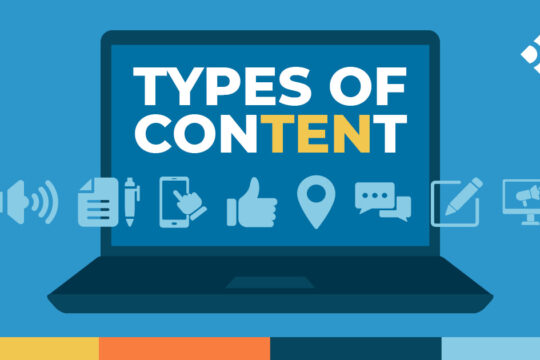
A Chief Research and Development Officer leads internal software development with her specialized teams to boost growth. She focuses on AI workflow automation that helps teams systematize tasks and reduce repetitive work.
Successfully integrating AI into your workflow requires clear goals to identify which processes can be improved with an artificial intelligence solution and what type of technology will best achieve those objectives.
Table of Contents
Identify Your Goals
For any business, integrating AI into workflow automation provides multiple benefits. It saves time by automating repetitive tasks that could otherwise take up valuable human resources, reduces the risk of error with complex or tedious projects, and frees up creative space for employees to work smarter and faster.
Defining your goals and objectives is critical when developing an effective strategy for AI integration. This ensures you align your technology with existing organizational practices and that every stakeholder understands the vision. It also helps keep the project focused and on track throughout the implementation process.
Start by identifying your business’s most significant pain points and areas for improvement. Clearly defining your goals can help you decide what enterprise AI solution is best for your business and what benefits it will provide. For example, small businesses may benefit from a generative AI solution that can answer common employee questions, such as requesting PTO or sick leave days. This type of solution would need to consider the requester’s country, state, employer type (full-time, part-time, or contractor), and employment status to generate accurate answers promptly.
For larger companies, implementing AI solutions enabling employees to collaborate in real-time can streamline and speed up processes. For instance, a customizable chatbot that uses natural language processing can automatically respond to typical customer service queries or classify client issues and route them to the relevant teams. This AI solution must integrate with your CRM and internal communication platforms to be most valuable and seamless for users.
Identify Your Data Sources
A successful integration of AI is dependent upon the availability of accurate data. This data might be stored in a database, flat file, or format a system can read and process. Often, these sources are used to train AI models and provide them with the knowledge and information needed to perform tasks.
Once teams identify their goals for integrating AI, they should carefully analyze their current workflows to identify areas that would benefit from an AI solution. This may include automating time-consuming tasks, improving customer service, or reducing errors in complex data analysis and prediction processes. Once these areas have been identified, teams can begin researching potential solutions that meet their needs.
To fully operationalize AI, it must be able to connect to real-time systems and interact with multiple people in various formats. This means integrating AI with the tools employees already use daily. For example, suppose an employee wants to ask generative AI about a specific company policy. In that case, it should provide them with an answer in a format that makes sense for that particular situation.
Generative AI technology communication platforms are accessible. However, many organizations need help with figuring out how to utilize the AI best they buy. This cannot be easy because employees sometimes need help understanding how to prompt the AI with their questions effectively. Furthermore, they may need to learn how to make the most of AI’s capabilities, such as enabling it to complete additional steps in a workflow or transfer the answer to another person.
Choose the Right Solution
AI is crucial to digital transformation, helping businesses accelerate innovation and shape their operations. But to reap its benefits, AI must be integrated into business workflows. To do so, identify the pain points and goals your business faces. This will help you determine which areas can benefit from AI solutions, such as increasing operational efficiency, boosting customer experience, and improving risk management.
Then, look at your current workflow and analyze which parts could be improved by AI workflow automation. This can include everything from automating time-consuming processes to reducing the number of errors. Once you know which parts of your workflow could be enhanced by AI, compare your options and choose the solution that best meets your needs. Keep in mind that different departments will require other AI platforms. Choosing the right tools for each can reduce your tech stack and make integrating AI into your workflows easier.
Assessing existing data sources relevant to AI-powered operations, such as customer service logs or accounting records. Using your existing data sources can be less costly and more reliable than building a new platform or tool to collect data from scratch. Finally, seek out user reviews, case studies, and references from other companies that have used the AI tools you’re considering.
Implementation
When it comes to integrating AI into your workflows, it’s no longer a question of “if” but “when.” As businesses become more reliant on technology and increasingly dependent on data to make informed decisions, implementing AI solutions that automate mundane tasks and streamline operations will help you gain a competitive edge in the marketplace.
The first step towards successful integration is laying out clear goals for your AI system to achieve. These objectives should be tied directly to your business needs and challenges. It’s also important to understand what type of solution you’re looking for and how much it should cost before selecting the right option.
To be effective, generative AI must incorporate data from multiple sources and can search across platforms in real time. It should also be able to access sensitive information and maintain security by only providing answers with relevant context. For example, if an employee asks about vacation days, the AI should consider their location and employment type to deliver a customized response.
In addition, an AI integration platform as a service should provide the flexibility to modify existing automation and build new ones quickly without disrupting existing processes or requiring IT intervention. It should also be easy to deploy and scale, as AI systems are only as functional and reliable.



